MR ESSEX
Leatherland lived in Essex for 60 years. He was a leading figure in the political and social life of the county.
ESSEX COUNTY COUNCIL
After spells as a district councillor in Laindon and Billericay, Leatherland became an Alderman on Essex County Council in 1946. An alderman was a county councillor elected by his fellow councillors, rather than by electors.
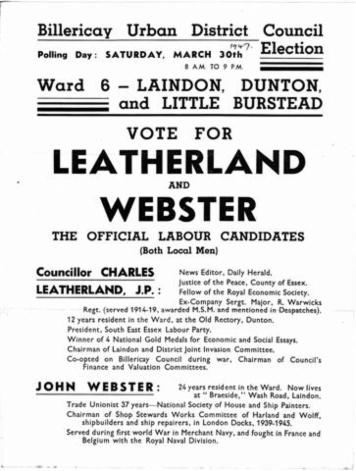
He was a member of the County Council for twenty-two years, fifteen of which as leader of the Labour group. He chaired the Finance Committee for several years. He was Vice-Chairman for six years and Chairman of the Council in 1960-61. He also spent 15 years as Chairman of the Eastern Regional Council of the Labour Party.
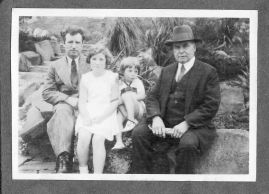
Leatherland with his children and father
ORDER OF THE BRITISH EMPIRE (OBE)
In 1951 he was awarded an OBE for political and public service.
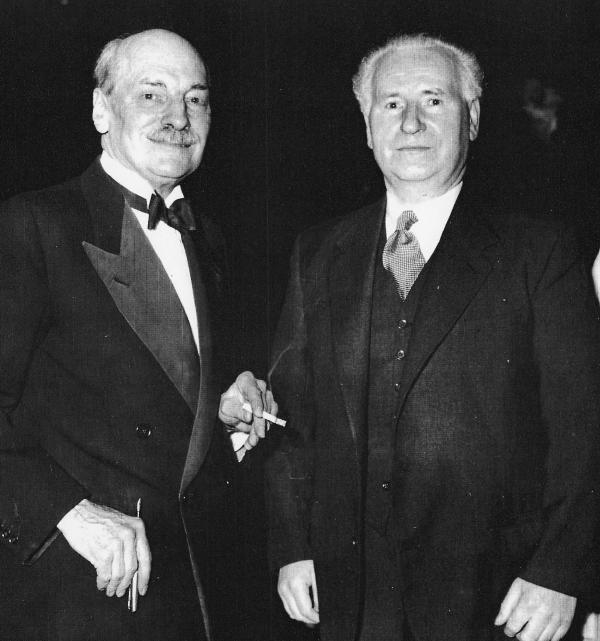
Leatherland with Labour Party Leader and former Prime Minister, Clement Attlee
UNIVERSITY OF ESSEX
In the early 1960s the Government decided to build more universities. Leatherland campaigned energetically for Essex to be the location of one of these new universities, and he played a leading role in the foundation of Essex University.
Plans for a University to be based in Essex originally began in the late 1950s. However, it was not until 1961 that the Government decided to establish a university in the county. Wivenhoe Park, on the outskirts of Colchester, was selected as a suitable site. The 200-acre park dated back to the eighteenth century.
In 1962 Dr Albert Sloman was appointed as the first Vice-Chancellor. Two years later it opened its doors to students for the first time. The first intake consisted of just 122 students studying in three schools: Comparative Studies, Physical Sciences and Social Sciences. The University's first Departments were Chemistry, Physics, Government, Sociology, Literature, Mathematics, Economics, the Language Centre and the Computing Centre. Teaching took place in the historic Wivenhoe House and in temporary huts while construction of the main campus began.
The first officers of the University were :
Lord Butler (Chancellor)
Sir John Ruggles-Brise (Pro-Chancellor)
Charles Leatherland (Treasurer)
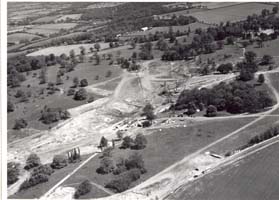
He remained in the role as Treasurer for 11 years.
In 1973 the University awarded him an honorary doctorate.


LOCAL GOVERNMENT JOURNALISM
Leatherland wrote a weekly column in the Municipal Journal for over ten years. As a result of this, he became a well known national figure in local government circles.
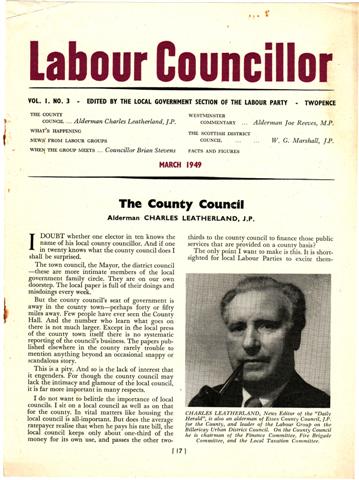
He also wrote a series of articles on local government themes for NALGO, the local goverment trade union. The Leatherland series of articles were widely used by schools and colleges in the teaching of civics, and NALGO proposed to turn them into a school and college textbook, although this idea never came to fruition.
MAGISTRATE,TERRITORIAL ARMY,BASILDON, DEPUTY LIEUTENANT
Leatherland served as a magistrate for 26 years. He became deputy chairman of the magistrates bench in Epping.
He played a prominent part in the establishment of Basildon as a New Town and served as a member of Basildon Development Corporation.
He also served on the Essex Territorial Army Association for many years.
He became a Deputy Lieutenant of Essex in 1963.
